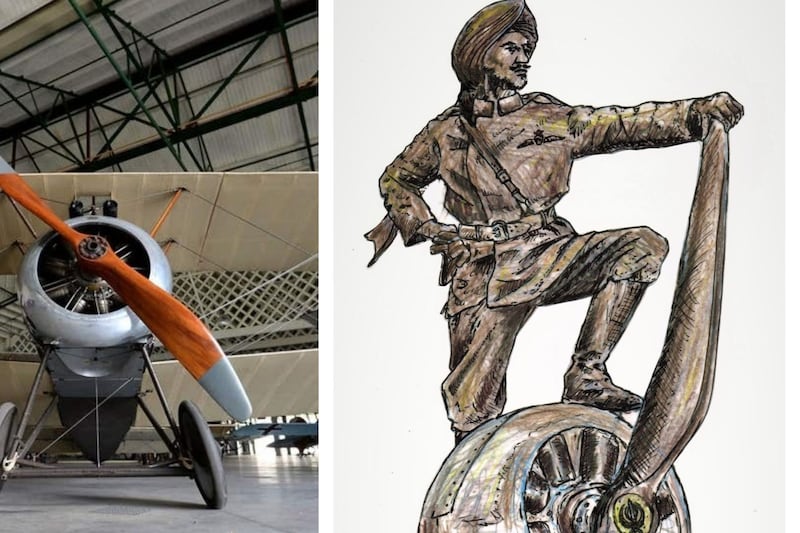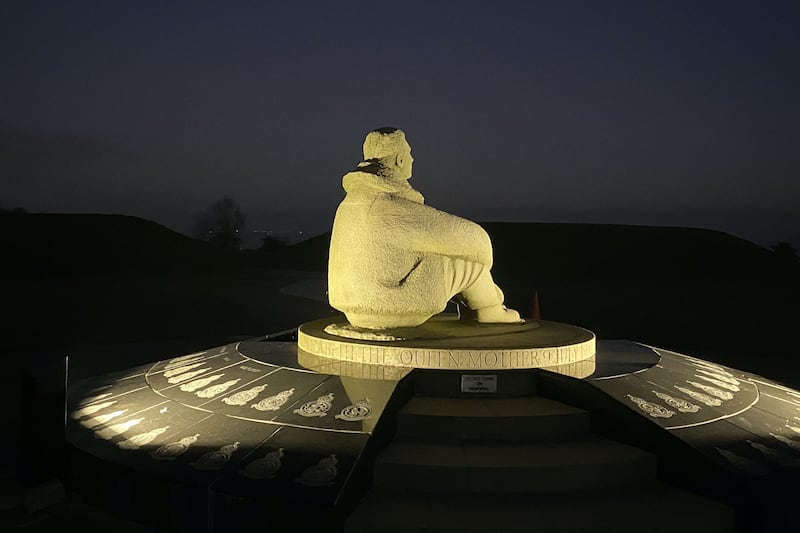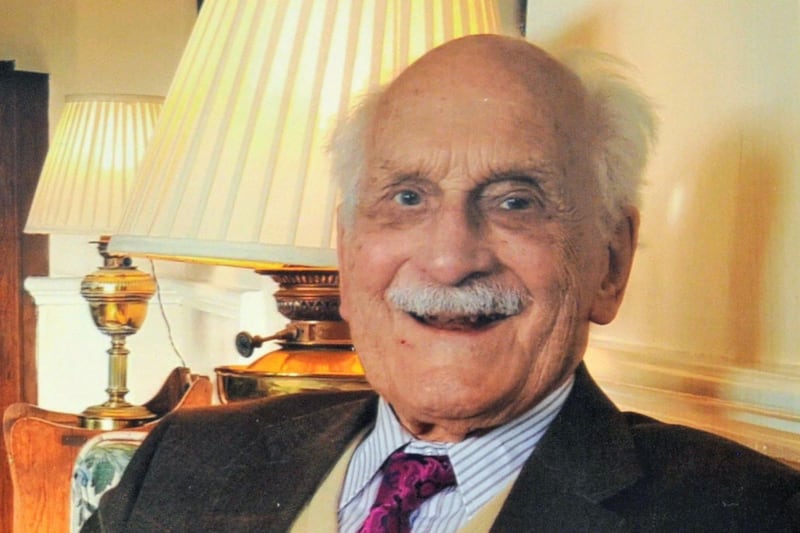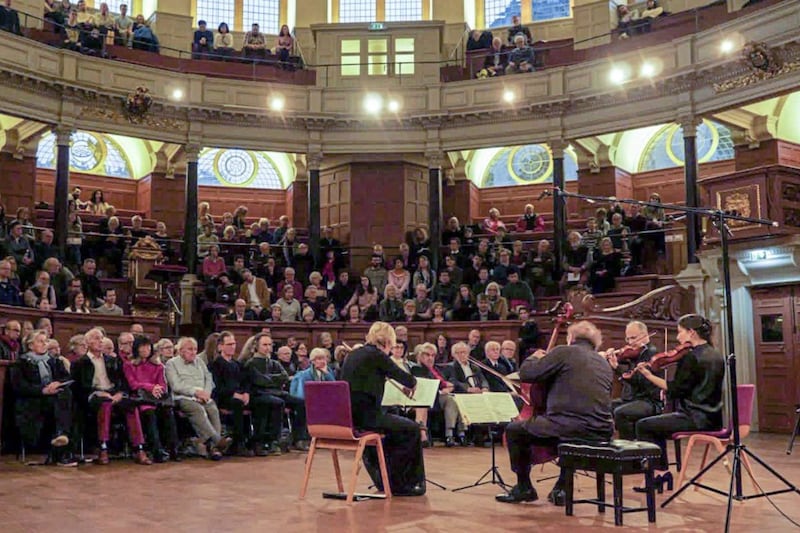THE skies heave been filled with interesting aircraft over the past 10 days, an RAF Tornado over the SSE Arena during the Belfast Tattoo, then a Typhoon, a MiG-15 and a Catalina Flying Boat among the planes that delighted the crowds at the Northern Ireland International Airshow at Portrush. Even the Red Arrows made it to the seaside town on Saturday.
It took a lot of time and organisation to coordinate these events yet I doubt if any were more poignant or memorable than the single Spitfire that came racing towards a quiet graveyard in Islandmagee.
In only six weeks, author and historian John C Hewitt organised a service for two Battle of Britain pilots, Squadron Leader Noel Henry Corry DFC and Sergeant John McAdam, both from Whitehead, Spitfire pilots, best friends and buried close to each other.
The guest list included family of the two men, friends, council members and men and women from the forces including young army, navy and air cadets.
After a brief service, the Last Post was sounded followed by a two-minute silence. As Reveille filled the cemetery, suddenly the air was filled with the urgent buzz of an iconic little fighter plane approaching fast from the west.
Passing low over the cemetery three times, it then sped off towards its base in Prestwick, and as it went, the Spitfire Mk 19 dipped its wings in salute to colleagues who fought in the Second World War.
It’s exciting to see displays of vintage aircraft but it’s another thing to be part of such a memorial where a modern pilot in a wartime plane pays respects to two of The Few.
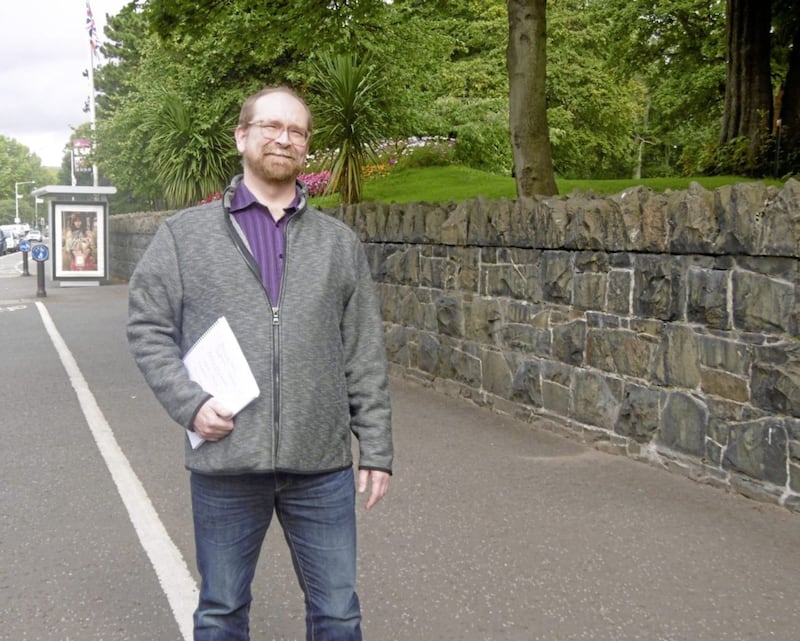
DON’T SUFFER IN SILENCE
WHEN expert advice is necessary, it’s important to go to someone who knows what he or she is talking about. Peter Pallin is one such person. Not only is he a member of the British Association for Counselling and Psychotherapy, he doesn't only talk the talk, he has walked in the shoes of an addict, paid the price and turned his life around to help others.
Peter's addiction to gambling began at the age of 10 on a cross-channel ferry when he watched a truck driver using a one-armed bandit.
“I was fascinated. I’d no money to put in myself so I asked him if I could pull the handle for him. He agreed until the handle stuck and he walked away saying if I could fix it I could have any money that came out.”
The young boy called a crew member who gave the machine a good kick, the handle worked and Peter walked away with the jackpot.
Beginner's luck, he maintains, offers a distorted view of gambling: the lucky person is the one who loses at their first attempt.
Years later, in a pub in England, he remembered that thrill of coins pouring into his hands. He was on his own and thought he’d try his luck with one of a dozen machines. It paid out and he was hooked. His savings and his wages soon went but he loved every flash and flicker on the screen, all carefully designed by physiologists to keep you playing.
He points out that gambling is not classed as an addiction, rather an impulse-control disorder, and he had it big time. Nothing changed; gambling was still his thing until the day he began taking ‘party’ drugs – cannabis was his drug of choice, then LSD then he sought out ecstasy.
“The first time, I was on my own. I joined a queue outside a club and asked a man where I’d get a tab. He and I went into an entry and smoked a joint – that was just to prove to him I wasn’t police. Next thing I was holding out my hand with £30 in it. Someone passed by, lifted the money and at the same time someone came from the other direction and put a matchbox in my hand. First I was very sick and then for almost eight hours I was dancing and loving life.” But the downturn soon came.
“People waiting like zombies for McDonalds to open and feeling anything but normal.”
When he came home to Belfast he went to a rave in the Ulster Hall and it all started over again but this time he was buying drugs, testing them for purity and then giving them to other users. Eventually he had what he describes as a wine cellar of supplies.
“Then the police came to my door. I invited them in, they discovered my cellar of supplies and I was charged and convicted of being in possession of class A,B and C drugs with intent to supply.”
That raid changed his life. He ended up in rehabilitation where someone recognised his ability to talk about his life in a constructive way and suggested he should train to become a councillor.
Today he is working with people from all walks of life all in the strictest confidence. He has been involved in adult and youth agencies a drug and alcohol counselling service and was at one time coordinator of an all-Ireland gambling counselling service.
He has worked with over 1,000 clients and relatives of those going through addiction.
His experience set him apart and he can identify with his clients because he knows just what they have gone through and wants to help them fight their demons.
:: More about Peter’s work next week. You’ll find a contact to him at www.gamblingcounsellor.com or telephone 0772 9000 926.







